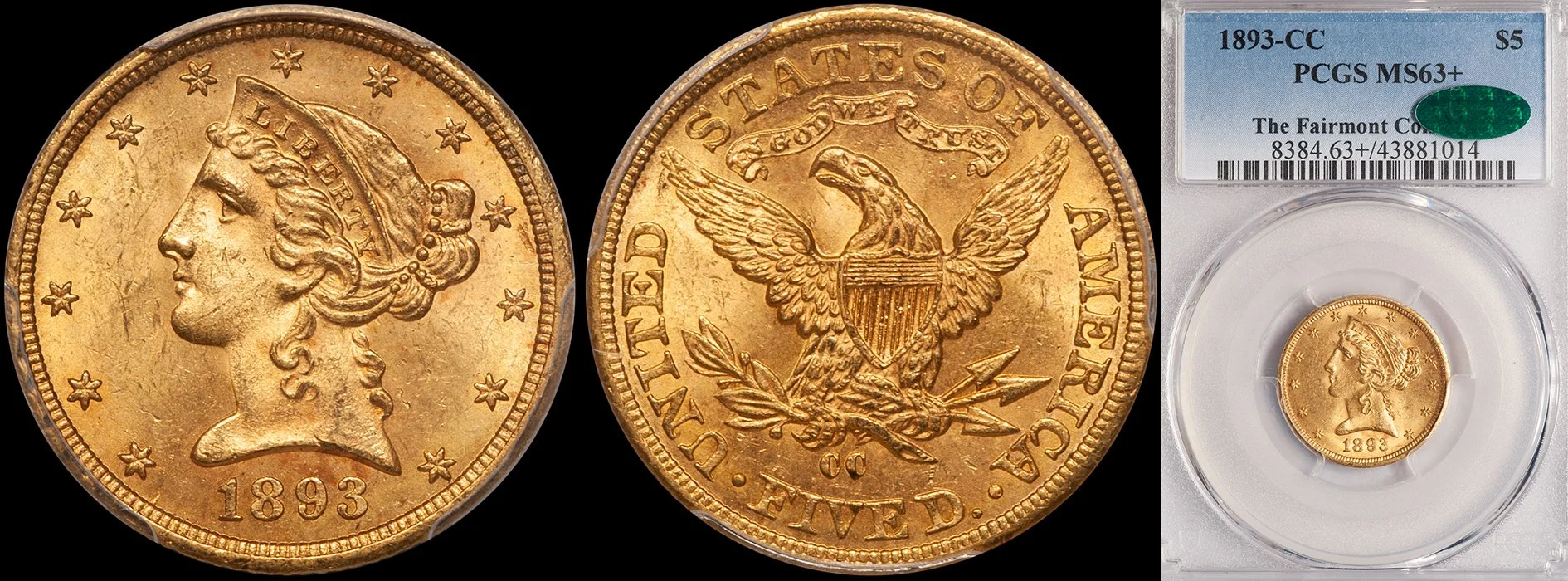The Evaporation of the Premium Factor in the Carson City $20 Market
/One of the many interesting facts about the rare coin business at this point in time is that the focus in the gold market is clearly on generics and semi-numismatic items and, at least for the time being, off many rare coins. How has this shift of focus affected the Liberty Head double eagle market and, more specifically, the market for common date Carson City issues? I look at common CC double eagles as a sort of bellwether for the dated gold market. The most common Carson City issues (such as the 1875-CC, 1876-CC, 1883-CC, 1884-CC, 1890-CC and 1892-CC) are affordable, exist in enough quantity that they are subject to occasional promotional activities and have a good enough background story that they are easy to sell to beginning collectors.
Traditionally, the price ratio for Extremely Fine and About Uncirculated Carson City double eagles versus generic common dates of this design was around two to one for XF coins and around three to one for AU coins.
A year ago, well before the current soaring gold market, a common 1904 double eagle in Extremely Fine was worth in the area of $700-800 and not an easy issue to sell. The same coin in About Uncirculated was worth just a bit more; say $750-850. At the same point in time, an 1890-CC double eagle was worth around $1,400-1,600 in EF and $2,000-2,250 in AU. This meant that the price ratio for the two issues was approximately 2x in EF and 3x in AU.
Today, this premium ratio has changed, primarily due to the fact that the price of gold has risen to nearly $1,200 per ounce and the demand for nondescript bullion-related double eagles is at an unprecedented high. Right now, a 1904 double eagle in Extremely Fine is worth around $1,500-1,600 while an AU is worth around $1,550-1,650. The market for an 1890-CC in these grades has risen as well, just not as dramatically as a seemingly mundane common date.
In Extremely Fine the current market value for an 1890-CC double eagle is around $2,000 while an AU50 is worth in the area of $2,500-2,750. This means a price ratio of about 1.3x for an Extremely Fine and in the area of 1.7 to 1.8x for an AU.
Why have the premiums for the Carson City double eagle(s) evaporated as much as they have? The answer is simple: the demand for double eagles is at unprecedented levels but the buyers of these coins tend to be unsophisticated investors who want anonymous, cheap coins with as small of a numismatic premium as possible. Even the most Carson City double eagle, like an 1890-CC, is still a numismatic coin and it is hard to convince a dispassionate investor that he should pay a 1.3 to 1.8x premium for two little “C’s” on the reverse.
If the price of gold continues to stay at its current level and demand for common issues remains as strong as it currently is, I do expect a small amount of this frenzy to spill over into coins such as Carson City double eagles. It is likely that the marketers who are selling bulk lots of 1904 double eagles in EF and AU are likely to attempt to “up sell” new investors into the rare coin market as these coins provide greater markups and more profit.
At this point in time I would have to say that common date CC double eagles are a pretty good value and if the price of gold continues to rise, it seems like they are a pretty good “double play” that incorporates the value of nearly an ounce of gold with some real numismatic scarcity. It will be interesting to see where the market premium factor for these coins are in another year.










